Stadio Olimpico
| Capacity | 70 634 |
|---|---|
| 553 (Press seats) | |
| Country | Italy |
| City | Rome |
| Clubs | AS Roma, SS Lazio |
| Inauguration | 1930 |
| Renovations | 1990, 2008 |
| Address | Via Foro Italico, 00194 Roma |
Advertisement
Stadio Olimpico – stadium description
How was first Stadio Olimpico built?
In the original 1909 urban plan of Rome, designed by architect and urban planner Edmondo Sanjust, there were no provisions for sports facilities within the city. This changed in 1926 when Mussolini’s fascist regime, viewing sports as a tool for propaganda, modified the city’s development plan and designated land for a sports complex. The chosen location was an 85-hectare, marshy valley at the foot of Monte Mario, on the right bank of the Tiber River, in the Della Vittoria district.
The organization responsible for executing the project was the Opera Nazionale Balilla (ONB), a youth organization operating under the fascist government’s directive. Construction began in 1928, led by architect Enrico Del Debbio. One of the first structures to emerge within the complex was Stadio dei Cipressi, which was partially completed in time for the 10th anniversary celebrations of fascist Italy.
The stadium was officially opened on October 22, 1932, although it did not reach its intended capacity of 100,000 spectators. Its main grandstand was integrated into the slopes of Monte Mario, and to mitigate the issue of unstable, marshy ground, the playing field was elevated by 4 meters, using soil excavated from the foundation works. The stadium was designed to host sporting events but, more importantly in that era, it served as a venue for large-scale public gatherings.
What was first expansion of Stadio dei Cipressi, former Stadio Olimpico?
In 1933, expansion efforts began on Stadio dei Cipressi (the Cypress Stadium) as the Italian regime aimed to bid for the 1940 Summer Olympics. The modernization project was carried out by architects Luigi Moretti, Angelo Frisa, and Achille Pintonello, who designed the stadium’s reinforced concrete structure. The expansion included a main football pitch as well as additional facilities for basketball and weightlifting.
The newly renovated stadium was inaugurated on May 9, 1937, marking the first anniversary of the establishment of the Italian Empire. Despite having a capacity of less than 60,000, there were plans to eventually expand it to accommodate 100,000 spectators.
How was Stadio Olimpico used before and during World War II?
Although Stadio Olimpico was designed as a multi-sport facility, it was primarily used for political events. In 1938, it hosted a grand military parade welcoming Adolf Hitler during his visit to Rome. Later, the fascist youth organization staged large-scale gymnastic demonstrations at the venue.
In September 1941, the stadium was the site of military ceremonies commemorating the Tripartite Pact, the political and military alliance between Italy, Germany, and Japan. However, plans for further stadium expansions were halted due to the Italian Campaign in World War II and the subsequent collapse of the fascist regime.
When Allied forces entered Rome in 1944, they took control of the stadium, using it as a storage facility for military equipment and a venue for sporting events organized for soldiers. After the fall of Mussolini’s regime, the government of Pietro Badoglio dissolved fascist organizations, transferring their assets to a newly established body—the Commissariat for Italian Youth (Commissariato della Gioventù Italiana). While there were initial plans to liquidate this institution after the war, it managed to retain ownership of the Foro Italico complex, including the stadium.
How was Stadio Olimpico rebuilt after war?
Following World War II, the stadium came under the administration of the Italian National Olympic Committee (CONI). The committee’s president, Giulio Onesti, announced that renovation work would be completed by 1950. The restoration project was led by engineer Carlo Roccatelli and architect Cesare Valle. During this period, control over the stadium became the subject of intense political rivalry between the Italian Communist Party and the Commissariat for Italian Youth.
In 1951, after Roccatelli’s death, the reconstruction project was taken over by Annibale Vitellozzi. A year later, the stadium’s redevelopment was completed, with a total cost of 3.4 billion lire (approximately 1.7 million euros).
What did Stadio Olimpico look like after reconstruction?
The new stadium covered an area of 33,500 square meters, with its reinforced concrete structure finished with travertine stone. It featured two parallel grandstands, each about 140 meters long—the Tevere Grandstand on the eastern side and the Monte Mario Grandstand on the western side. The northern and southern stands (Curva Nord and Curva Sud) were designed as two semi-circular sections with a radius of 95 meters.
Encircling the pitch was an athletics track. The stadium’s overall height from the field to the top of the stands was approximately 18 meters, but from the outside, it appeared lower due to the playing field being sunk 4.5 meters below ground level. This design choice aimed to integrate the stadium harmoniously into the landscape of the Foro Italico.
Access to the stadium was provided by ten entrance gates—two for each of the semi-circular stands and three for each of the straight grandstands. The stadium lacked a full roof, with the exception of the Monte Mario Grandstand, where an 80-meter-long steel structure covered 40 two-meter-wide booths designated for radio and television commentators.
The stadium was also equipped with an extensive press area. The press room featured 54 telephone booths, as well as telegraph and photographic equipment, allowing for rapid image transmission. A total of 572 seats were reserved for journalists, making Stadio Olimpico one of the most media-friendly sports venues of its time.
What were beginnings of reconstructed Stadio Olimpico, known as Stadio dei Centomila?
The new stadium, named Stadio dei Centomila (Stadium of 100,000) due to its planned capacity, was officially inaugurated on May 17, 1953, by the President of Italy, Luigi Einaudi. The opening ceremony featured an international football match between Italy and Hungary, as well as the finish line of the sixth stage of the Giro d’Italia cycling race, which ran from Naples to Rome.
During the match, legendary Hungarian footballer Ferenc Puskás scored twice, leading his team to a 3-0 victory. That same day, Giuseppe Minardi triumphed in the Giro d’Italia stage finish, with spectators in the stadium witnessing his victory.
A week later, the first club football match was held at the stadium—a Serie A clash between SS Lazio and Juventus, which ended in a 1-0 win for Juventus. Shortly after, AS Roma made their debut on the new pitch, playing to a 0-0 draw against SPAL.
In 1954, the stadium hosted the final of the European Cup in rugby, where Italy faced France. The match ended in a French victory, with approximately 25,000 spectators in attendance.
How did Stadio Olimpico change for 1960 Olympic Games?
In 1955, the International Olympic Committee selected Rome as the host city for the 17th Summer Olympic Games, scheduled for 1960. This decision accelerated efforts to adapt the stadium for the event. During this period, the name Dei Centomila
was gradually replaced with Olimpico.
The modernization efforts were relatively minor, as the stadium was still quite new. The number of press seats was increased to 1,126, and four lighting towers were installed for evening events. Additionally, two electronic scoreboards were placed in the northern and southern stands, making their debut on October 18, 1959, during a Rome derby league match. The stadium was also equipped with an independent power plant capable of generating 375,000 watts.
The official opening ceremony of the Olympics took place on August 25, 1960. Throughout the event, Stadio Olimpico witnessed numerous historic athletic performances, including multiple world records.
How was Stadio Olimpico renovated for 1990 FIFA World Cup?
After Italy was awarded hosting rights for the 1990 FIFA World Cup, a debate arose over the future of Rome’s stadiums. Three options were considered: expanding Stadio Flaminio, constructing a new stadium in the southwestern part of the city, or modernizing Stadio Olimpico. The first option was quickly ruled out due to space constraints, while the construction of a new venue was deemed too time-consuming. Ultimately, authorities decided to renovate Stadio Olimpico.
The project was managed by the Italian National Olympic Committee (CONI), which commissioned architects Vitellozzi (the designer of the 1953 stadium) and Clerici, along with engineers Teresi and Michetti. The plan, unveiled in early 1987, envisioned transforming Stadio Olimpico into a fully covered stadium with a capacity of 85,825 seats. The Tevere and Monte Mario stands were to be raised by six meters, while the northern and southern stands would be rebuilt. The existing floodlight towers were to be replaced with a modern lighting system integrated into the new roof structure. The estimated cost of the renovation was between €17.5 million and €20 million.
However, the renovation encountered numerous obstacles. In November 1987, three Italian environmental organizations—Italia Nostra, Legambiente, and WWF Italy—filed a legal complaint, arguing that the planned 40-meter roof pillars would disrupt the landscape and local ecosystem. In January 1988, an administrative court sided with the complainants, ordering a halt to construction. As a result, CONI was forced to revise the project.
To resolve the dispute, the architects lowered the height of the roof pillars and designed spiral staircases inside each one to provide access to the highest stands. The revised design was approved, and construction resumed just 18 months before the start of the World Cup. Progress was slow, as SS Lazio and AS Roma continued to play their home games at the stadium during the 1988/89 season. Once the season ended, both clubs temporarily moved to Stadio Flaminio for a year to allow uninterrupted construction.
The renovated stadium, completed in April 1990, had a capacity of 85,000 spectators and was handed over to FIFA in May—two weeks behind schedule. Only a portion of the old Tevere stand’s façade remained from the original Olimpico. The northern and southern stands were moved 9 meters closer to the pitch, while the Monte Mario stand was expanded at the expense of the former press center.
The new roof featured an external steel ring, 13 meters high, supported 29 meters above ground on 12 pillars and four additional structures leading to the stands. The construction was stabilized by radial cables holding an internal steel ring. The roof itself was made of fiberglass and Teflon membranes, suspended from 88 steel cables. Its construction cost approximately €80 million and was designed by the Majowiecki company from Bologna.
The total cost of the Stadio Olimpico renovation reached around €225 million. Subsequent investigations revealed irregularities in the bidding process, as the contract was awarded to the highest bidder, raising concerns about corruption and financial misconduct.
What was last renovation in 2007-08?
In October 2006, Rome was selected as the host city for the 2009 UEFA Champions League final. This marked the fourth time Stadio Olimpico was chosen for such an event, prompting CONI to accelerate long-overdue renovation plans—the first in 16 years.
Although the stadium's structural layout remained unchanged, significant upgrades were made, particularly to the Monte Mario stand, which received new VIP areas. More comfortable seats of varying widths, depending on the stand, were installed throughout the stadium. The press area was expanded, doubling the space available for journalists.
Additionally, new electronic scoreboards were installed, and some of the barriers separating the stands from the pitch were removed to improve sightlines for spectators. Following the renovations, the stadium’s capacity was adjusted to 70,634 seats, making it the second-largest stadium in Italy after San Siro in Milan.
What sporting events have taken place at Stadio Olimpico?
Stadio Olimpico is one of Europe's most prestigious sporting venues—where the history of football, athletics, and other disciplines has been written time and time again. Since the 1960s, the stadium has played a crucial role in international football. After hosting the Olympic Games, it became the home of Rome’s two biggest clubs—Lazio and Roma—but it was the Italian national team’s matches that gave the stadium its legendary status.
In 1968, Stadio Olimpico witnessed Italy winning their first European Championship, defeating Yugoslavia in a replayed final. In the following decades, the stadium hosted several European cup finals, including the 1977 clash between Liverpool and Borussia Mönchengladbach, when the English club secured their first-ever European Cup. In 1980, West Germany defeated Belgium in the European Championship final, claiming their second title.
One of the most dramatic moments in the stadium’s history was the 1984 European Cup final, when AS Roma had the chance to win the trophy on home soil. Facing Liverpool, the match ended in a draw, leading to a penalty shootout. Italian fans were left heartbroken as Liverpool triumphed 4-2, securing yet another European title.
The 1990s began with another major tournament—the 1990 FIFA World Cup. Stadio Olimpico hosted six matches, including three victorious group-stage games for Italy. Although the hosts were eliminated in the semi-finals after a penalty shootout loss to Argentina, the tournament’s final, played in Rome on July 8, was a historic one. West Germany defeated Argentina 1-0 thanks to a penalty by Andreas Brehme, winning their third World Cup. It was also the first World Cup final in history to see players receive red cards.
Beyond international tournaments, Olimpico has regularly hosted European club finals. In 1991, Roma played in the UEFA Cup final against Inter Milan, winning the second leg 1-0 but losing on aggregate. Five years later, Juventus defeated Ajax in a penalty shootout to claim their second European title. In 2009, FC Barcelona beat Manchester United in the UEFA Champions League final, in a match that symbolized Pep Guardiola’s dominance over European football.
In the 21st century, the stadium has remained one of Europe’s key sporting venues. It regularly hosts the Coppa Italia finals and Italian national team matches. In 2021, Stadio Olimpico was one of the host stadiums for UEFA EURO 2020, a tournament uniquely played across multiple cities. The opening match of the competition took place in Rome, where Italy defeated Turkey 3-0, followed by wins over Switzerland and Wales—starting their journey to becoming European champions.
For decades, the stadium has also been a global center for athletics. It hosted the 1960 Olympic Games, followed by the 1974 European Athletics Championships. In 1987, the stadium was the venue for the World Championships in Athletics, an event that saw record-breaking performances—Carl Lewis set a new world record in the 100 meters, while Stefka Kostadinova established the still-standing world record in the high jump. Since 1980, Olimpico has hosted the annual Golden Gala, a prestigious athletics meet that became part of the Diamond League. The event was born in the aftermath of political tensions following the 1980 Moscow Olympics and has since become a staple in the international athletics calendar. In 2024, the stadium once again took center stage in world athletics, hosting the European Championships exactly 50 years after Rome last held the event.
Team sports have also found their place at Stadio Olimpico. In 1995, the stadium hosted the first-ever Military World Games, and since 2012, the Italian national rugby team has played its home matches here as part of the Six Nations Championship.
What non-sporting events have taken place at Stadio Olimpico?
Stadio Olimpico is also one of the most important music venues in Italy. Although originally designed as an athletics and football stadium, its modernization and the addition of a roof transformed it into a prime location for large-scale concerts. Since the 1990s, it has hosted some of the biggest names in music.
The history of concerts at Stadio Olimpico began in July 1991 when two jazz legends—Miles Davis and Pat Metheny—took the stage. Performing in front of a 20,000-strong audience, they opened a new chapter in the stadium’s history. Two years later, the first Italian artist to perform at Olimpico was Zucchero Fornaciari, attracting 10,000 fans to his concert. Over the following years, the stadium became a regular stop for both Italian and international music icons, including legends such as David Bowie, Tina Turner, and R.E.M.
A true milestone came in 1998 when Italian singer Claudio Baglioni set an attendance record at Stadio Olimpico. During his Da me a te tour, he gathered a crowd of 82,000 inside the stadium, with an additional 8,000 fans allowed in without tickets. This was made possible thanks to CONI’s approval to install a massive stage on the pitch, which was scheduled to be replaced immediately after the concert.
Among the artists who have performed at Olimpico the most, Vasco Rossi holds the record. Between 1991 and 2023, the Italian rock legend played an impressive 23 concerts at the stadium. Luciano Ligabue also became a regular performer at the venue, giving 13 concerts there. The stadium has also been a favorite destination for top international bands—British group Depeche Mode has played at Olimpico five times, most recently during their Global Spirit Tour and Memento Mori World Tour. Irish rock giants U2 have also visited the stadium multiple times, delivering four concerts, including unforgettable performances during The Joshua Tree Tour 2017.
Major rock, pop, and electronic music stars have become part of Stadio Olimpico’s legacy. From the Live Rock festival in 1996, where David Bowie and Tina Turner performed on the south stand, to R.E.M.'s legendary concerts during their Around the Sun Tour in 2005, the stadium has solidified its status as a premier concert venue.
How Stadio Olimpico compares to other Serie A stadiums?
Advertisement
Pictures
-

01.01.2024 © Messapi (CC BY 4.0) 
22.06.2011 © Doc Searls (cc: by) 
12.09.2015 © Mister No 
03.05.2021 © Robert Saganowski, Stadiony.net 
03.05.2021 © Robert Saganowski, Stadiony.net 
03.05.2021 © Robert Saganowski, Stadiony.net 
09.01.2022 © Robert Saganowski, Stadiony.net 
09.01.2022 © Robert Saganowski, Stadiony.net 
09.01.2022 © Robert Saganowski, Stadiony.net 
12.03.2014 © ildirettore 
2015 © Marco_Pomella 
17.11.2012 © Antonio Cinotti 
17.11.2012 © Antonio Cinotti 
27.02.2018 © Liam McKay 
17.03.2012 © Blackcat (CC BY-SA 3.0) 
27.05.2007 © Gaúcho (CC BY-SA 3.0) 
05.12.2012 © Gary Denham (CC BY-SA 2.0) 
16.06.2021 © Vincenzo.togni () 
01.02.2009 © Alexdevil (CC BY-SA 3.0) 
11.05.2014 © romazone (CC BY 2.0) 
20.08.2009 © Andrea 93 
30.04.2012 © Luigi Guarino 
28.05.2017 © DoubleJack92 (CC BY-SA 4.0) 
30.08.2009 © Charanjit Chana (CC BY-SA 2.0)
Related news
2025
-
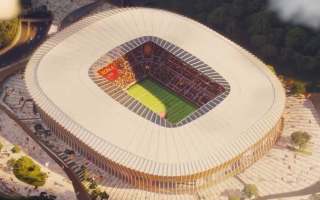
Italy: AS Roma stadium to host EURO 2032?
The plan to build AS Roma’s new stadium in the Pietralata district of Rome is gathering momentum. The venue has just been included – alongside the Stadio Olimpico – on the preliminary list of thirteen Italian stadiums shortlisted to host matches at Euro 2032.
-
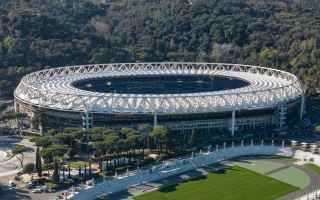
Italy: AS Roma to stay at the Olimpico at least until 2028
It’s now official: in its centenary season, AS Roma will still be playing home matches at the Stadio Olimpico. The club and Sport e Salute have announced an extension of the existing lease of the capital’s stadium until 2028.
-
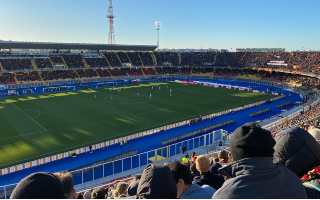
Italy: Major renovation of Stadio Via del Mare in Lecce begins
The renovation of Via del Mare in Lecce has officially begun. It is the largest sports investment in the city in decades and a key part of preparations for the Mediterranean Games. The plan is to carry out the work while matches continue to be played at the venue.
-
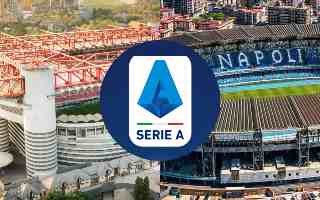
Italy: Attendance at Serie A stadiums in the 2024/2025 season
Serie A is experiencing a resurgence in stadium attendance not seen in decades. In the recently concluded 2024/25 season, Italy’s top division recorded an average crowd of 30,842 spectators per match, making it one of the best-attended campaigns in the league’s history.
-
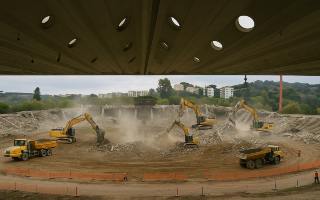
Italy: Lazio still without a stadium of their own. Two proposals blocked
Stadio Flaminio has been falling into disrepair for years. Despite multiple attempts at revitalization, none have come to fruition. Today, the most hotly debated proposal comes from Lazio’s owner, Claudio Lotito. But with mounting resistance and bureaucratic hurdles, is Flaminio facing yet another chapter of stagnation?
-
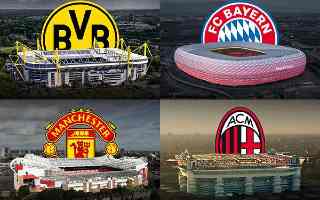
UEFA: 2. Bundesliga ahead of Arsenal and Atletico! Surprising attendance figures in Europe
Who attracts the biggest crowds to their stands, and who unexpectedly falls short of the numbers needed to make the top ranks? The latest attendance report for European leagues in the 2023/24 season provides the answers.
-
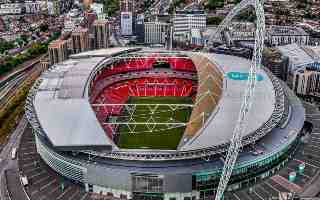
Spain: El Clásico at Wembley? Barcelona unsure about return to Camp Nou
Work on Spotify Camp Nou is progressing rapidly with the aim of resuming matches this season. According to Mundo Deportivo, there is optimism about the possibility of returning by the time of El Clásico.
2024
-
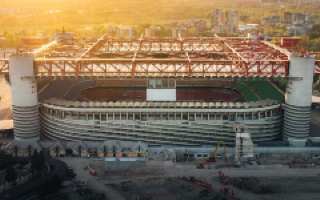
Italy: Big problems of Italian stadiums ahead of EURO 2032
Italy's sporting infrastructure is in need of major investment ahead of EURO 2032. Michele Uva, UEFA's executive director, during an interview, expressed concern about the state of Italy's stadium preparations for the prestigious event, adding that only one venue meets the requirements, while others face further obstacles. Will Italy manage to complete the projects in time?
-

Italy: AS Roma reveals design for new stadium!
AS Roma executives met with the mayor of Rome today to discuss progress on planning a new stadium for the club. Plenty of visuals were also officially unveiled. What will the facility look like?
-

Italy: Why no new stadiums in Italy? Giuseppe Marotta explains
A neglected San Siro and an infrastructure that is not of the highest standard could be among Italy's main problems ahead of the upcoming 2032 European Championship, which they are co-hosting with Turkey. Giuseppe Marotta, in a TV interview, spoke about the situation in Italy, including the state of the stadiums.
-
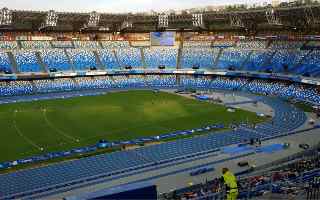
Italy: Alarm ahead of Euro 2032. Will Italy lose hosting of tournament?
There are eight years left until Euro 2032. For most, this is a long time, but for Italian clubs and cities, who need to renovate their facilities, it can be a tense time. All the more so as only three stadiums are ready at the moment. Could the poor condition of the arenas put Italy's hosting of the tournament in risk?
-

Italy: Serie A stadium attendance during 2023/24 season
The Serie A playoffs are now over, so it's time for a stadium recap of the season. And this one surprised with the best attendance in 27 years. 3 teams surpassed the magic barrier of one million spectators, including Inter and AC Milan, who played a fierce Milan derby for the highest attendance, decided by a minimal difference.
-

Italy: How much have Serie A stadiums earned in 2023?
The Italian league is ranked among the prestigious "Big 5" - a group of Europe's best leagues. Despite this, in terms of revenue, Serie A stadiums lag behind venues in England or Spain, as the Calcio e Finanza portal has shown by publishing the revenue brought in by Italian arenas in 2023. The gap between the bottom and the top of the ranking is huge, but the battle for 1st place was fierce.
2023
-

UEFA: Official announcement of EURO 2028 and EURO 2032 hosts
UEFA has officially announced that the UK and Ireland will host the European Football Championships in 2028, while Italy and Turkey will co-host the event in 2032.
-

Italy: Stadio Olimpico will undergo renovation before the European Championships
What does the future hold for one of Italy's most recognisable venues? Should it tremble for its existence, like San Siro until recently? It turns out that there is no need for fear. Rome's arena will additionally soon undergo a series of upgrades.
-

Euro 2032: Explore Italy's bid
The Italian Football Federation has presented a list of ten stadiums to host the 2032 European Championship. Provided, of course, that UEFA grants Italy the rights to host its flagship tournament. Here is Italy's bid to host Euro 2032.
2022
-

Italy: Roma turns up the pace of the design work
Fans still have to wait a while for the detailed design of AS Roma's new stadium. The club's general manager Pietro Berardi assures that the pace of work on the plans is lightning fast and all the cards will soon be laid on the table.
-

Rome: AS Roma's new stadium. When and at what cost?
The long-awaited project is nearing implementation. Although the "Wolves" will still have to wait to take the first kick there, the initial financial predictions for the construction and a realistic date for the arena's commissioning have emerged.
-

Italy: Here are the 2022/23 Serie A stadiums!
The previous weekend saw league games kick off in 3 of Europe's TOP 5 leagues. After France, England and Germany, it is time for the Italian Serie A, which will inaugurate the campaign on Saturday, August 13. Meet all the arenas where the rivalry for the scudetto will take place!
-

Italy: AS Roma confirms plans to build new stadium
AS Roma has just announced that it will present a feasibility study of its plans to build a new stadium, to the city council in Rome. The site chosen for the new arena is located in Pietralata borough of 'the Eternal City'. It is a site that belongs to the municipality and is not subject to any legal restrictions.
 StadiumDB
StadiumDB